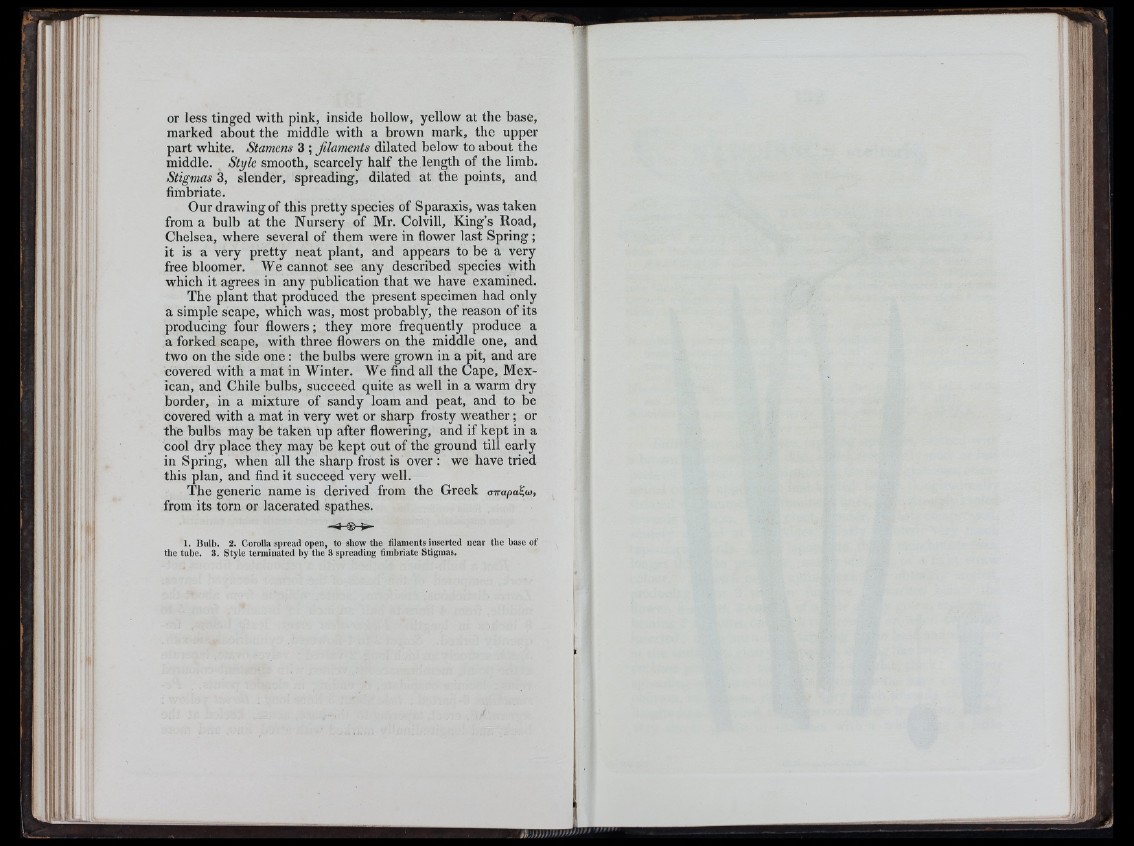
or less tinged with pink, inside hollow, yellow at the base,
marked about the middle with a brown mark, the upper
part white. Stamens 3 ; filaments dilated below to about the
middle. Style smooth, scarcely half the length of the limb.
Stigmas 3, slender, spreading, dilated at the points, and
fimbriate.
Our drawing of this pretty species of Sparaxis, was taken
from a bulb at the Nursery of Mr. Colvill, King’s Road,
Chelsea, where several of them were in flower last Spring;
it is a very pretty neat plant, and appears to be a very
free bloomer. We cannot see any described species with
which it agrees in any publication that we have examined.
The plant that produced the present specimen had only
a simple scape, which was, most probably, the reason of its
producing four flowers; they more frequently produce a
a forked scape, with three flowers on the middle one, and
two on the side one: the bulbs were grown in a pit, and are
covered with a mat in Winter. We find all the Cape, Mexican,
and Chile bulbs, succeed quite as well in a warm dry
border, in a mixture of sandy loam and peat, and to be
covered with a mat in very wet or sharp frosty weather; or
the bulbs may be taken up after flowering, and if kept in a
cool dry place they may be kept out of the ground till early
in Spring, when all the sharp frost is over : we have tried
this plan, and find it succeed very well.
The generic name is derived from the Greek anapafw,
from its torn or lacerated spathes.
1. Bulb. 2. Corolla spread open, to show th e filaments inserted near the base o f
p '1 the tube. 3. S ty le terminated by the 3 spreading fimbriate Stigmas. riil